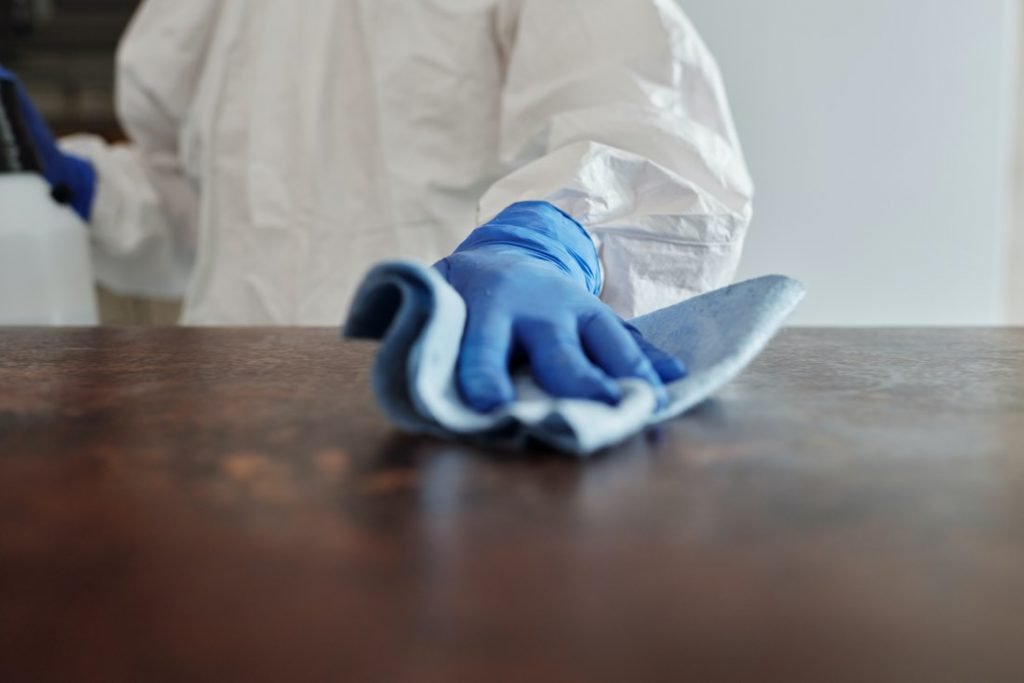 What should you do if an employee contracts COVID-19? Don’t be left scrambling to figure it out. In most cases, you don’t need to shut down. There are, however, important steps you need to take to prevent further spread.
What should you do if an employee contracts COVID-19? Don’t be left scrambling to figure it out. In most cases, you don’t need to shut down. There are, however, important steps you need to take to prevent further spread.
Encourage employees to stay home
Be aware of potential transmission scenarios. In any of these situations, the CDC recommends employees remain home:
- When they’re feeling sick
- When they’re showing symptoms of COVID-19
- When diagnosed with COVID-19
- When they have a family member at home with COVID-19
Employees should then immediately notify their supervisor and follow CDC recommended steps. They are required to quarantine until the criteria to discontinue home isolation have been met.
If an employee becomes sick while at work, they should be separated from other employees, customers, visitors and be sent home. Develop a plan to provide safe transport home or to a healthcare provider if needed.
Prompt notification
If an employee has symptoms or has been diagnosed, one of the most challenging tasks is informing any employees who may have worked near them. “6-15-48” is simple numerical sequence to help remember CDC contract tracing guidelines:
Infected employees must identify others who worked within 6 feet of them for 15 minutes or more within 48 hours prior to showing symptoms.
It’s critical to develop a contact-tracing process in advance. That way, you follow the process as soon as any risk has been identified.
- Share the contact-tracing process with employees in advance so it’s understood that everyone is expected to provide a list of people they came into contact with at work.
- Paper contact-tracing: meeting logs and standard questions to learn the movements of the exposed employee. This needs to be kept separate and confidential.
- Digital contact-tracing: apps that record when another employee comes closer than six feet and can quickly identify exposed employees if a worker becomes symptomatic or tests positive. Privacy and security of employee data should be addressed upfront.
- Maintain confidentiality of any sick employee and avoid alarming all your employees. The employer should never reveal any person’s name who has COVID-19.
- Contact the local or state health department to report any cases at your company.
Exposed employees must stay home for 14 days after last exposure and self-monitor for symptoms. If possible, they can work from home. Prompt notification reduces transmission and also fulfills OSHA’s requirement to provide a safe workplace.
Workplace safety when an employee is COVID-19 suspected or confirmed
Less than seven days since the employee has been in your facility?
- Close off any areas used for a prolonged period of time by the sick employee
- Wait 24 hours, then clean and disinfect. If 24 hours isn’t feasible, then wait as long as possible
- During 24-hour waiting period, open any doors and windows that can increase air circulation
Seven days or more since the employee has been in your facility?
- Additional cleaning and disinfection are not necessary
- Continue routine cleaning and disinfecting all high-touch surfaces
Follow up with quarantined employees
If any quarantined employees show symptoms or are diagnosed with COVID-19, you should go through your contact-tracing process.
MidwestHR is a leading CPEO in Illinois (certified professional employer organization). For over 20 years clients have counted on our team of experts to manage all or part of their HR functions including payroll and tax administration, benefits management, workers’ compensation, risk management and more. We know it’s challenging to adjust business operations during COVID-19 and we’re here to help. Give us a call at 630-468-9286 to learn more.